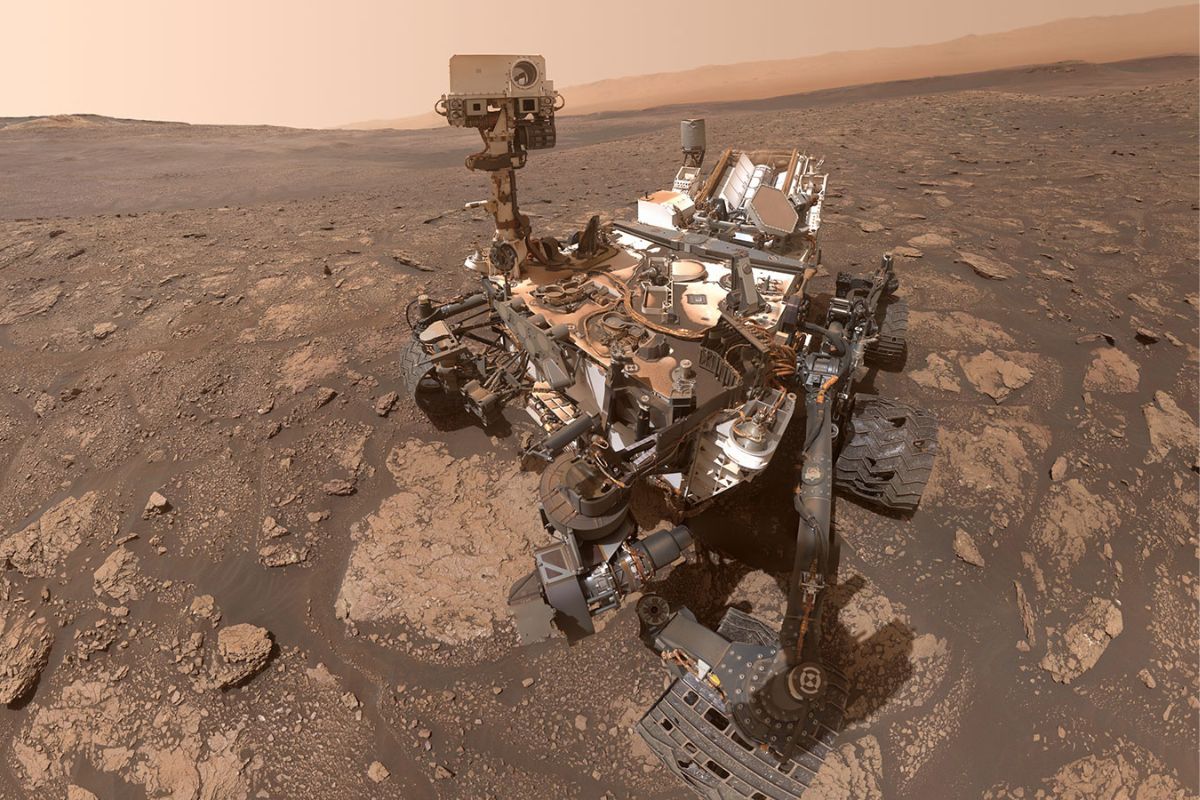

Current Mars rovers drill only two inches deep. However, if we want to come across traces of former life, we will have to search at least two meters underground.
Did life ever exist on Mars? It is a pressing question to which researchers are trying to find an answer with the help of Mars rovers. A sign that could indicate the viability of our nearest neighbor is the presence of amino acids; organic compounds that are essential for life and are therefore often referred to as the ‘building blocks of life’. However, it is unlikely that we will encounter it on the surface of Mars, researchers show. So there’s only one thing to do: dig deeper.
Life on Mars
Earth’s thick atmosphere and vast magnetic field protect its surface from harmful cosmic rays: high-energy particles (usually protons and helium ions) emanating from our sun. Scientists suspect that Mars also had a magnetic field and a thicker atmosphere in its early years, which allowed liquid water to flow freely over the surface of the red planet. Because liquid water is essential for life, scientists want to know whether life may have ever existed on Mars. And so they look for evidence of former life—think organic molecules like amino acids—in ancient Martian rock.
Amino acids
Why amino acids? Amino acids form the basis for proteins and are therefore an essential part of all life on earth. Finding amino acids on Mars would therefore be very promising. At the moment, the Mars rovers Perseverance and Curiosity are eagerly scanning the Martian soil. But what are the chances that amino acids are actually up for grabs?
cosmic rays
Not that big, researchers now say. That’s because Mars, with its current lack of a magnetic field and wafer-thin atmosphere, is subject to a much higher dose of cosmic rays than Earth. In addition, harmful cosmic rays are known to break down organic molecules as they penetrate solid rock, ionizing and destroying everything in their path.
Experiments
The researchers base their findings on experiments in which they mixed amino acids with substances that simulate the Martian soil. They then stored the samples in test tubes that mimicked the Martian atmosphere and exposed them to various Mars-like temperatures. The samples were then irradiated with gamma rays — a type of highly energetic light — to simulate cosmic rays. And guess what? “Our results suggest that amino acids that may be contained in surface rocks and Mars regolith are being destroyed by cosmic rays much faster than previously thought,” said study researcher Alexander Pavlov.
more complicated
It means the search for Martians has gotten a little more complicated. “Current Mars rovers drill to about two inches deep,” Pavlov says. “But at such depths, amino acids are destroyed within 20 million years.” That may sound long, but is a relatively short time, as scientists look for traces of life that thrived on Mars billions of years ago, when the planet was much more like Earth.
Dig deeper
So, according to the researchers, if we want to come across evidence of past life, we will have to dig much deeper. How deep? At least two meters below the Martian surface. Only so far underground do we have a chance to find pristine amino acids untouched by cosmic rays.
Although amino acids have not yet been found on Mars, they have been discovered in some meteorites, including one meteorite from the red planet. However, amino acids can also be formed by a non-biological process. Unfortunately, it is not yet clear how the amino acids found in the Mars meteorite in question were formed. “Since Mars meteorites are usually ejected from a depth of at least one meter, it is possible that the amino acids were protected from cosmic rays,” said study researcher Danny Glavin. So, could the amino acids found in the Mars meteorite have been left behind by living organisms? It could be… If we have better excavators that allow us to peer deeper beneath the Martian surface, we may know the answer.
Source material:
†NASA Experiment Suggests Need to Dig Deep for Evidence of Life on Mars” – NASA
Image at the top of this article: NASA/JPL-Caltech/MSSS